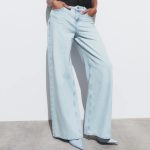When it comes to ear piercings, there are as many styles and types as there are personalities that flaunt them.
From simple lobe piercings to exotic cartilage creations, the world of ear bling is vast and varied. Yet, among the myriad options, taper ear piercings have captured the attention of many. Websites like twofeatherplugs offer a diverse selection of taper ear piercings, showcasing intricate designs that cater to individual tastes and styles.
Are you curious about this technique? Well, you’ve come to the right place!
Welcome to your all-in-one guide to taper ear piercing jewelry!
What Is Taper Ear Piercing?
Taper ear piercing, involving stretching the earlobes to accommodate larger jewelry, has ancient origins. Various indigenous tribes and ancient civilizations practiced ear stretching as a form of body modification.
In contemporary society, taper ear piercing and stretching are predominantly seen as a form of self-expression and individual identity.
The resurgence of this ancient practice, especially in Western societies, gained momentum during the late 20th century, influenced by the punk and body modification subcultures.
Today, taper ear piercings are widespread, accepted, and adapted by people worldwide, symbolizing a blend of cultural respect, aesthetic preference, and personal significance. The variety of jewelry available today—from glass to surgical steel—echoes the diverse and rich history of this form of body modification.

The Process
Taper ear piercing and stretching involve several meticulous steps to ensure the safety and integrity of the procedure. Here’s a breakdown of the process:
1. Initial Piercing
It starts with a standard earlobe piercing, usually at 18 or 20 gauge, performed by a professional piercer.
2. Healing Period
The initial piercing needs adequate time to heal completely, typically around six to eight weeks.
3. Choosing The Taper
Select an appropriate taper, ensuring it’s the next size up from the current gauge.
4. Preparation
Clean both the ear and the taper with a mild, non-alcoholic solution. Then, lubricate the taper and the earlobe with a safe substance like jojoba oil or a water-based lubricant.
5. Insertion
Slowly insert the small end of the taper through the piercing. It’s important to be gentle and patient, avoiding any force, as this can cause tearing and complications.
6. Inserting The Jewelry
Once the taper is through, follow it with the new piece of jewelry, securing it in place. Opt for one that’s the same size as the taper to maintain the stretch.
7. Aftercare
Clean the stretched piercing regularly with saline solution. Also, avoid unnecessary movement or rotation of the new jewelry.
8. Healing And Next Stretch
Allow the stretch to heal completely before attempting to stretch again, typically waiting at least a month between stretches. Progressively increase the gauge size, moving up in small increments.
9. Monitoring
Monitor the piercing closely for any signs of infection, irritation, or complications. If any adverse reactions occur, such as excessive swelling, redness, or discharge, seek advice from a professional piercer or a healthcare provider.
Types Of Taper Ear Piercing Jewelry
Taper ear piercing jewelry embodies a fusion of tradition and modern aesthetic, offering an expansive spectrum of styles, shapes, and materials to cater to diverse preferences and needs.
- Straight Tapers
These are predominantly used for initial stretches due to their straight, uniform shape that allows for a controlled, gradual stretching of the piercing.
Generally made of surgical stainless steel, titanium, or glass, the design is simplistic, prioritizing functionality.
The material choice affects the weight, with metals being heavier, potentially assisting in the stretching process, and glass providing a hypoallergenic option for sensitive skin.
It’s crucial to ensure that the taper is lubricated adequately and that the stretch is performed slowly to avoid tears or blowouts in the ear tissue.
- Curved Tapers
The curvature aligns with the ear’s natural shape, potentially reducing strain on fresh stretches. This makes them a great alternative for individuals finding straight tapers uncomfortable.
From colorful acrylics to polished metals, curved tapers marry comfort with aesthetic diversity. Some might feature decorative elements or unique color patterns.
Note that it’s vital to consider the healed state of the stretch before opting for a curved taper to avoid complications in the piercing trajectory.
- Spiral Tapers
These are often chosen for their aesthetic allure, with the spiral shape offering a distinctive look. They’re more suited to stretches that have healed adequately due to the shape that could otherwise cause uneven stretching.
Ranging from vibrant acrylics to ornate glass designs, spiral tapers cater to a variety of style preferences. Each material offers a different weight and texture, impacting the wearing experience.
The intricate shape necessitates careful handling to avoid snagging, and it’s advised to consider the practicality based on lifestyle and preferences.
- Material Variations
The world of taper ear piercing jewelry has an array of stunning material choices, including the following:
- Surgical Stainless Steel: Hypoallergenic and known for its silvery finish
- Titanium: Offers a lightweight option and is available in various colors due to anodization
- Acrylic: Known for its colorful and affordable varieties
- Glass: Available in clear, colored, or with intricate designs embedded
- Organic Materials: Wood, bone, and horn are popular for their natural and unique patterns
The Bottom Line
By understanding the diversity in types, materials, and usage considerations of taper ear piercing jewelry, you can make informed decisions that align with your aesthetic preferences, comfort levels, and lifestyle, ensuring a satisfying and safe stretching journey.




